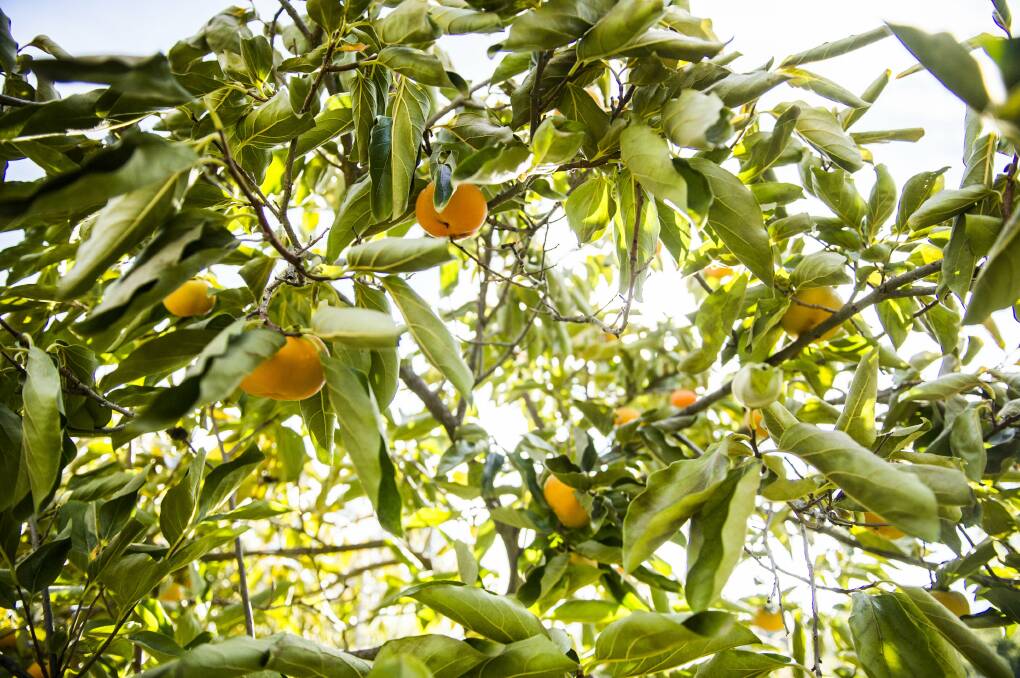The globular fruits of the persimmon (Diospyros kaki), which hang like orange-red lanterns in the late autumn landscape, are highly regarded in the Orient, and particularly Japan, where they are often dried to produce a nutritious food.
Subscribe now for unlimited access.
$0/
(min cost $0)
or signup to continue reading

The attractive deciduous trees, which grow anywhere from a cool climate to the semi-tropics have broad, glossy, green leaves, which produce an equally attractive autumn array of deep yellow and red.
Fruits from the majority of commercial varieties are known to be astringent - that is to say unpalatably tart - until they have reached a state of over-ripeness like apricot jam, which removes the astringency.
Persimmons are sold as bare-rooted stock in nurseries from early June onwards.
Cultivars such as 'Dai Dai Maru', 'Nightingale' and 'Tanenashi' will not require pollination. Nor will the non-astringent 'Fuyu' which can also be eaten when firm. Simply slit the leathery skin from the lower end and peel back like petals without removing the stem before spooning out the pulp. Young saplings are best grown steadily in free-draining moderately fertile soil, allowing them to develop a straight trunk to about two metres before maturing to produce an attractive rounded crown.
Not quite as outstanding in the autumn landscape is the rosy-cheeked pomegranate. Pliny the Roman Elder wrote much about fruiting plants including the pomegranate, as many as nine varieties of which were grown for dyes, to tan leather, to make a jet-black writing ink and to make a drink from the pulp. The Greeks seemed to be more enamoured of the plant's appearance. In India, regarded as a symbol of marital bliss, they were offered to the gods for the fulfilment of wishes. Russians used them to make soup, sauces and dessert.
Ornamental in a decorative bowl where they will last for several months they also make sauce for meats, especially pork.
Punica granatum (from the latin 'a grain' which describes the tightly packed seeds of the fruit) is a small deciduous trees seldom more than two to three metres in the Australian garden, having the appearance of an irregularly shaped shrub.
P.granatum 'Nana' is a dwarf ornamental growing to around one metre in height and an ideal tub plant for courtyards. A non-fruiting form known as 'Nana Plena' is much loved for its spectacular double scarlet flowers with crepe-like petals, off-set with glossy green foliage.

